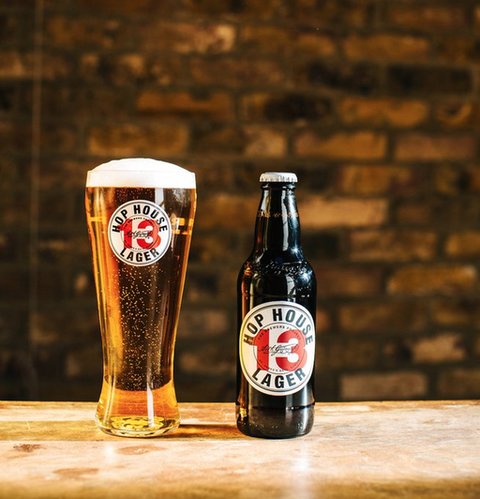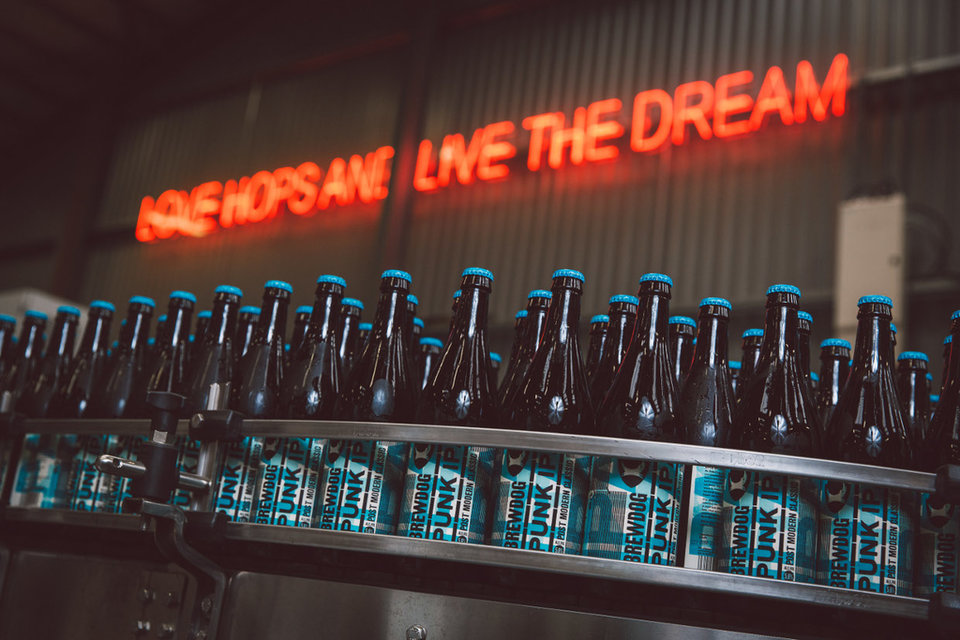BRANDING | OPINION
Is craft beer branding about to implode?
Craft beer has boomed over the last few years, and a historic theme has been brands, from small independents to mass market products, taking a brash approach in their product design and branding. James Cowdale, creative director of Third Floor Design offers his perspective.
My first memory of the craft drinks boom was when I consciously converted from drinking lager to drinking craft ale, which was probably around eight years ago. But as a market trend, it almost arrived from nowhere.
We saw shops appearing, lots of little independent shops selling unconventional, really cool beers. When Brewdog burst onto the scene, craft beer hit its peak. Their arrival made headlines and, in turn, craft beer hit the mainstream.
Why did the craft beer revolution start? Bucking the trend has become a common trait in consumer behaviour. It’s raising a finger to big brands and we’re seeing that in every industry, not just craft beer. Consumers arguably no longer want to follow these big brands that they believe have no care, no sense of responsibility, no ethics, and are purely driven by profit.
Conversely, you’ll find that, particularly with craft ale, there’s a real story, a real passion and a real love behind the brand. As a consumer market it’s easy to get swept along in the narrative.
Big brands started paying attention
Some circles berate big brands for supposedly exploiting an opportunity in the craft beer market at the expense of the small, independent producers. But spotting a fertile market, it’s only natural that the mainstream brands are going to want a slice.
For me, it’s craft by the knife. It’s not about how they’ve made it; it’s just simply a pretence at being small and artisanal. They have simply done what every industry does; tapped into something they see is on trend. I wouldn’t call that exploitation, at least certainly not in a negative sense.
In the craft beer industry, it’s typically: loud coloured cans; big typography; ragged illustration; and absolutely no brand narrative.
While I’m championing the underdog, I admit that I think the big brands have also done things very well. In fact, Guinness has excelled itself with its own craft larger, Hop House 13. Bearing in mind that Guinness has done nothing but Guinness since 1759, it was a bold move when suddenly, in 2014, it launched a craft lager that, on first impressions, you simply wouldn’t know is from Guinness.
That’s the clever thing about it; Hop House 13 looks just like a really nice, mainstream craft lager. There’s a nod back the brand in that the iconic Guinness signature appears on every product, but it’s extremely subtle.
They’ve clearly not felt the need to trade on the back of their brand’s success, they’ve just simply gone out there and diversified. I commend their approach and I certainly don’t think they’re doing anything wrong.

Hop House 13’s understated branding. Image courtesy of Guiness
Has stand-out branding become homogenous?
You also need to put this ‘craft jacking’ accusation into context. It’s important to remember that there are two very distinct markets for craft beer: those consumers who choose to drink it because they think it’s cool and those who drink it because they genuinely love it. Those who think it’s cool will adopt whatever mainstream craft ale is in every pub. By contrast, the connoisseurs will be experts on the maker, the process and the specific ingredients that go into a particular type of ale like IPA.
By definition, craft is independent and, yes, large brands are buying some of the small breweries. But isn’t it wonderful for those people who’ve put their heart and soul into creating their own brand to get such recognition from an industry giant?
But what starts as a niche trend can get done to death. Once the mainstream brands join the party, small brands get the fear factor, and this happens in every industry. Small and new producers think they need to replicate the style of the industry leaders to succeed. That’s when they stop pushing their brand boundaries.

The brand that spawned so many – Brewdog’s aesthetic is now synonymous with craft beers. Image courtesy of Brewdog.
Eventually all new entrants to the market follow suit and the sector gives way to commonalities in design. In the craft beer industry, it’s typically: loud coloured cans; big typography; ragged illustration; and absolutely no brand narrative.
No brand will ever stand out by falling in line and yet at Third Floor we do still get briefs from breweries asking to look just like Brewdog or just like Beavertown without realising that it will actively hinder their product’s chance of success.
Brewdog was successful – is successful – because it was the first to take a traditional ale label and turn it right on its head. You can only make a statement like that once and there’s no value in new brands repeating it ad nauseam. It loses impact.
Some of the more infamous craft brands in the UK
Is it time for a more refined approach to branding?
To get ahead of a trend, our creative design team will always begin by examining other industries that have gone through a similar growth pattern. You can spot the original trailblazers – the Brewdogs – of the industry; the rise in commonalities; the tedium in design; and then that one brand that came along and shook it all up again.
The ‘how’ almost always comes down to doing the very opposite of everyone else. And in the craft drinks market, the best way to stand out is to do the exact opposite of those loud coloured cans, with the big typography, ragged illustrations and no brand narrative.
To divert from beer for a moment, the resurgence of craft cider is certainly no secret. It’s had a lot of very positive press in the past year. But as a craft drink, cider brands are vulnerable to taking a march of the lemmings too.

Dunkertons new branding, created by Third Floor. Image courtesy of Third Floor Design.
At Third Floor, we were fortunate to meet Dunkertons, which for the past 30 years has been creating multi award winning craft ciders and perry. A fearless brand, Dunkertons wasn’t afraid to buck the trend and our rebrand of their product range is a perfect example of us putting our expertise into practice.
Not only is each bottle of Dunkertons cider different, each one tells a story. In a departure from craft drinks with no meaning to their image, there’s a narrative behind the new labels.
To return to craft beer, what does the future have in store? I’d say it’s here to stay, because once you start offering the consumer more choice, you can’t go back. When you walk into a pub now you’ll see any number of ales on offer. You can’t now go back to offering just two or three. You can’t take away consumer choice.
But to bite back, small brands are going to have to move away from the masses. To stand out, small producers need to revert to refined, traditional branding, albeit with a modern twist. Forget Brewdog now. These guys could learn a lot from the cool, quiet confidence of Guinness. In all that clutter of craft beer can noise, simplicity is sure to shout louder on the supermarket shelves.